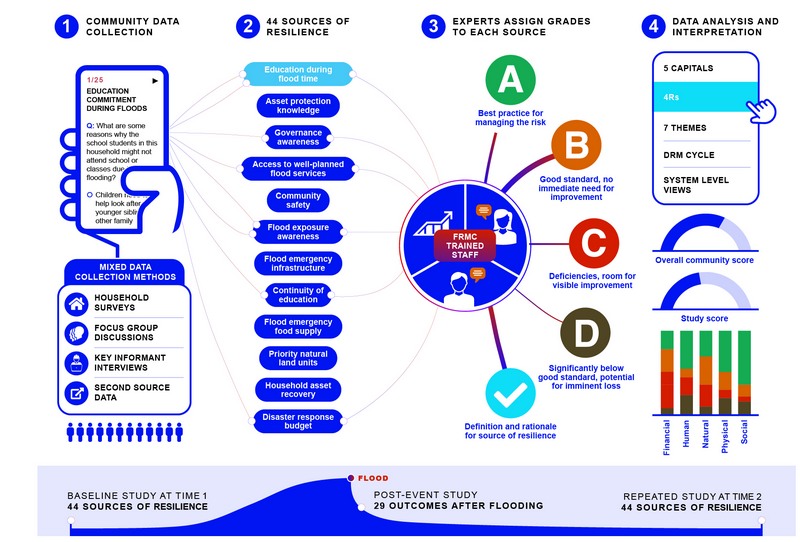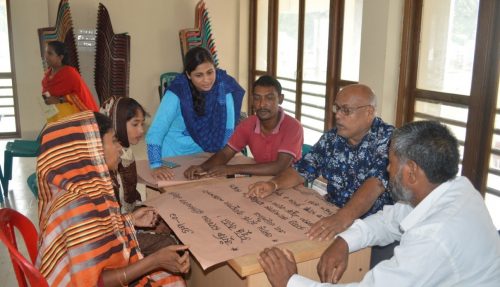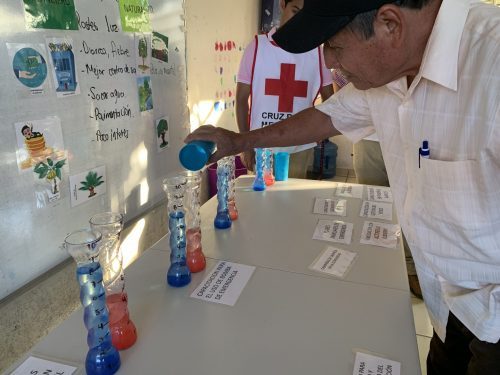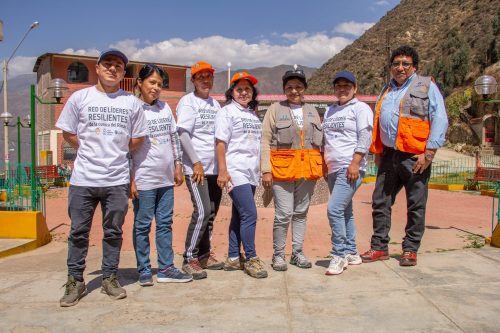Recent research from IIASA presents empirical evidence of the dynamics of resilience. The results show that there are no silver bullet solutions for building community flood resilience. But there is hope, learn more about how the Flood Resilience Measurement for Communities can help identify the right actions for your context.
The Flood Resilience Measurement for Communities (FRMC), developed by the Zurich Flood Resilience Alliance, is being applied in more than 200 communities across the globe, making it one of the most widely applied resilience measurement tools in the world.
IIASA has analysed the results from 68 communities where the FRMC was applied between 2016 and 2018. More than 1 million data points to measure the sources of resilience were collected using state-of-the-art measurement tools, including mobile phone applications. In 17 of these communities a flood occurred during the study period hence a post event study was carried out as well.

Community flood resilience dynamics are community specific
Our analysis of this study provides empirical evidence that confirms what community members and stakeholders have known all along: that community resilience is context specific and what actions will have the best return on investment in terms of enhanced resilience depends on the unique characteristics of each community.
Based on our research findings we’ve developed a typology of community flood resilience capacity where you can learn more. Our analysis reveals what the most promising areas of action are for communities with different profiles. We have also uncovered that resilience does not change continuously or smoothly, but rather changes can occur abruptly when a given level of resilience reaches a specific threshold.
Still, there are no one-size-fits-all solutions when it comes to community flood resilience.
This means that in order to build flood resilience you need to holistically understand the community, and its existing gaps or needs, as well as strengths, in terms of resilience, and prioritise interventions that will build the capacities required in this specific community context.

Community flood resilience must be understood before it can be enhanced
The Flood Resilience Measurement for Communities helps you do just that.
The reason we developed the FRMC is that we believe that resilience can only be enhanced if it is first holistically understood. When the Zurich Flood Resilience Alliance set up in 2013 there were no internationally validated resilience measurements available. So we developed our own.
The Alliance understands resilience as “the ability of a system, community, or society to pursue its social, ecological, and economic development and growth objectives, while managing its disaster risk over time in a mutually reinforcing way”.
When studying, and measuring, resilience we make a point of being explicit on ‘resilience of what, to what, for whom’ in order to ensure our approach is feasible and useful. You can learn more about our work looking at measuring resilience to hazards beyond floods, for example heat-waves, in this blog.
How does the Flood Resilience Measurement for Communities Work?
The FRMC is designed not only as an instrument for research, but primarily for organisations and authorities working with communities to better understand their resilience, and what actions would enhance it.

The first version of the FRMC, which was used in this research, measures 88 (44 in FRMC 2.1) indicators called ‘sources of resilience’, across 5 capitals: social, human, financial, physical, and natural.
Information on these sources of resilience is gathered by trained enumerators and a range of methods are used including household surveys, focus groups with diverse stakeholders in the community, key informant interviews, and existing data. Trained assessors then use this data to grade the sources of resilience.
Identifying solutions using the FRMC
Based on the results of the FRMC regarding resilience gaps and strengths that can be leveraged, and community priorities, resilience enhancing actions are identified and developed together with community members and local stakeholders.

Activities implemented with communities that the Zurich Flood Resilience Alliance’s partners work with range from livelihood diversification, community centred early warning systems, repairs to infrastructure, and solid waste management.
Some solutions, for example investment in local, community led, volunteer groups, are pursued in a range of communities across the globe. However, these groups look slightly different in Bangladesh, Mexico, and Nicaragua, based on the specific characteristics and needs of the community, and the expertise of the Alliance partner they work with.

The unique collaboration between practitioners and researchers within the Zurich Flood Resilience Alliance is enhancing this process by generating research on the dynamics of resilience. By understanding the dynamics of resilience for different types of communities, solutions can be more strategic. And understanding non-linear change can support communities and stakeholders to ‘stay the course’ over the longer term.
Want to learn more?
You can read the full article Differences in the dynamics of community disaster resilience across the globe here.
If you’re working with flood prone communities to build resilience and think the Flood Resilience Measurement for Communities could support your work find out more here and get in touch at info@floodresilience.net

Comments